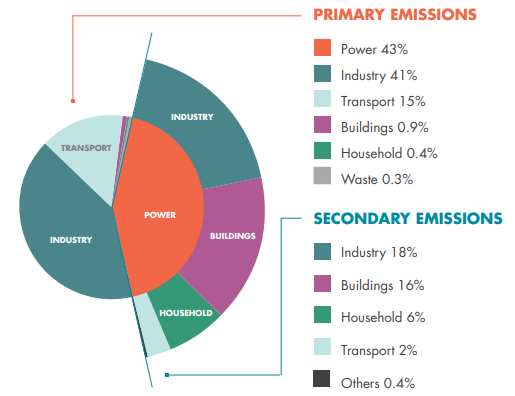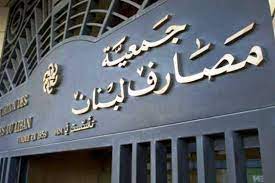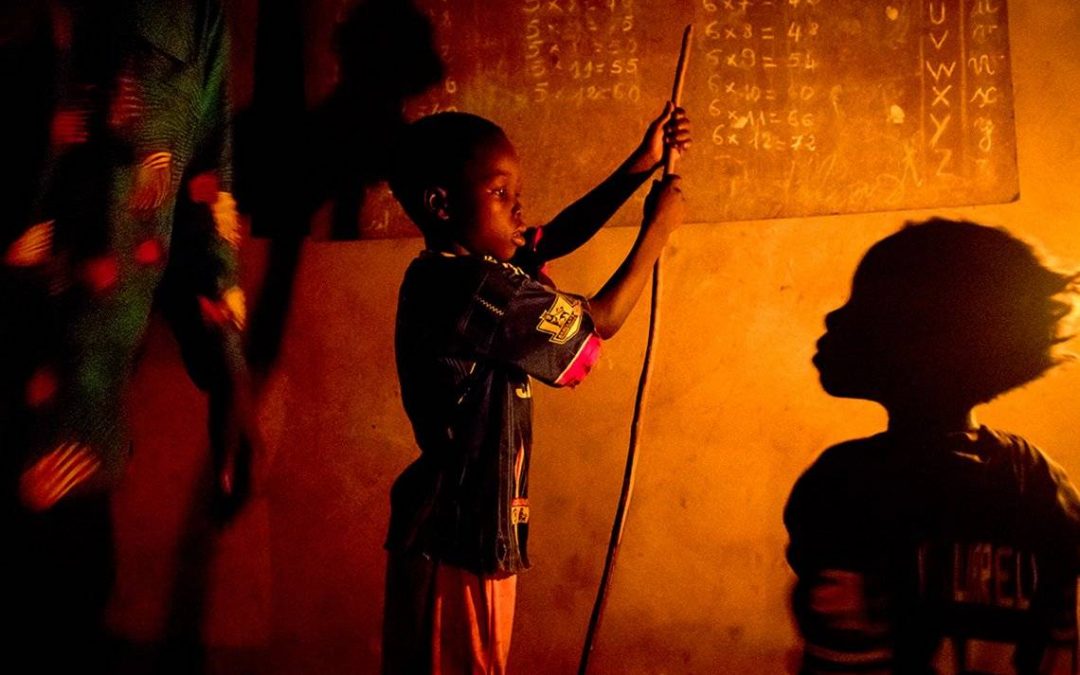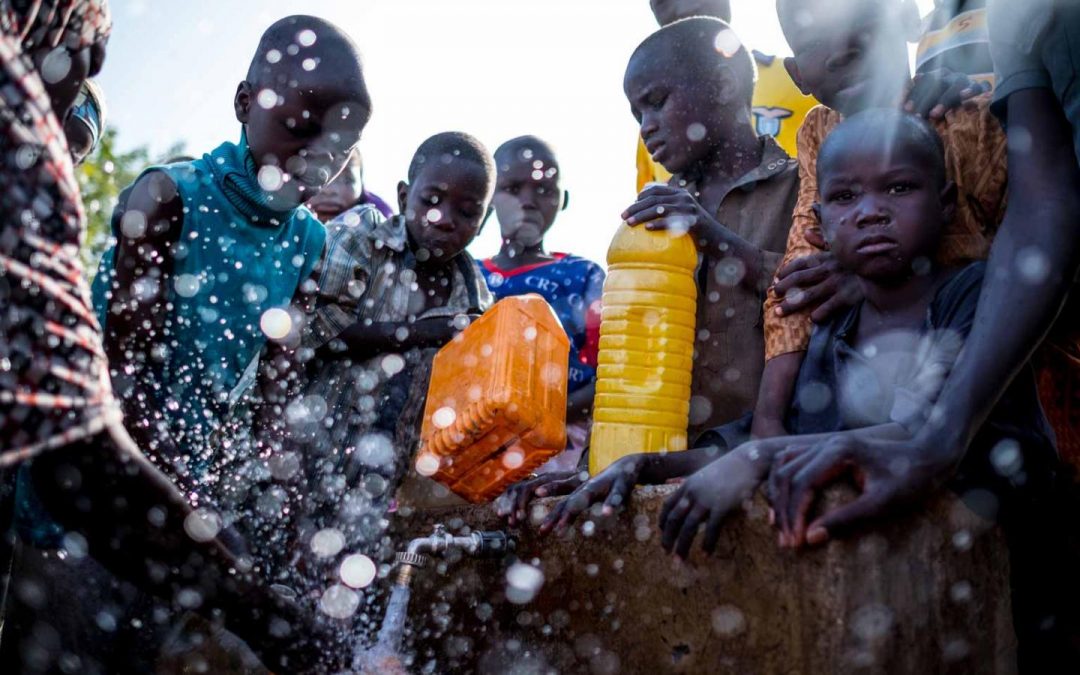
by Mahmoud Yaghmour | Apr 15, 2022 | Uncategorized
In this article, I’ll be discussing the Lebanese economic crisis, it’s challenges and solutions. – Fun fact: the 0’s and 1’s (above) are, ‘Lebanon’ in binary.
Most news today about Lebanon, is unfortunately, bad news.
There’s an electric and currency crisis, a brain drain and so much more.
And in these dark times, Lebanon is losing its lights, its educated people, to the other place.
But outside sensational news, and using data, can we verify these challenges and offer a solution?
Well, after Investigating Lebanon’s inflation and GDP, we clearly see sky-rocketing inflation and a tumbling GDP.
But what is the solution?
Now, for a country to trade, it needs to find a niche – that is that one or two things it can do better than it’s competition and trade with those things.
The bottom chart (in the above visualization) represents the population and export sizes of Lebanon, Saudi Arabia and UAE – Lebanon, the one in red, is greatly surpassed in both metrics.
However, if we look on the chart on-top, in 2017, we see a golden opportunity, in the form of a golden bar: This is Lebanon’s Human Capital Index; which at a fraction of the budget, performs relatively close to the two economic powerhouses of the region.
This is where Lebanon can do trade! This is Lebanon’s niche!
You are Lebanon’s niche!
And here are the solution details summarized:
‘While in Lebanon, the Lebanese youth should work to obtain then commercialize patents in the digital service space.’- This is the Solution!
This will diminish inflation, brain drain, unemployment, and offset copycat strategies!
For the detailed version of the solution, please examine the visual above.
And, to validate that Lebanese ideas are commercially lucrative:
According to the IMF, Lebanon ranks second in terms of Venture capital investment as a % to GDP. The United States ranks 1st with 2.84%, Lebanon comes in a close-second with 2.8%
– so experienced investors see great potential in Lebanese talent!
And in being part of the solution, I’m in the process of launching MSBA.io! – a site dedicated to the MSBA Alumni, where they can tell their stories, share their portfolios and get discovered; there will even be a collaboration section where they can work on projects to help build up the Lebanese tech scene!
So, this story has not ended; it is only just beginning!
Thank you! 😊
—————-
References:

by | Apr 15, 2022 | Visualization
Greenhouse gases, especially carbon dioxide (CO2) emissions, are viewed as one of the core causes of climate change, and it has become one of the most important environmental problems in the world. International production fragmentation has led to substantial changes in labor market, such as job creation/job loss, changing labor market structure and labor productivity. Such changes are perceived to affect CO2 emissions of those economies that participate in different parts of global value chains. Is there a relation between Labor Force, Population, Life Expectancy, and CO2 emissions? Developed countries which is reflected by high life expectancy value can better handle manufacturing while maintaining low levels of CO2 emissions.
Can we reduce emissions without hurting jobs or companies’ financial performance?
The problem is the high pollution rate in manufacturing and populated countries around the world have been witnessing increase in CO2 emissions as population and labor force increased. According to the World Development Indicators dataset, CO2 emissions increases from manufacturing as labor force increases. The trend line is an increasing straight line (positive slope) which means that as the labor force is increasing the CO2 emissions are increasing. This means the manufacturing process is a source of pollution.
Moderate the manufacturing process using environmental-friendly techniques
- Increase investment in research and development to find new technologies to make the manufacturing process more eco-friendly.
- Increase spending (buy new technology) to manage an environment friendlier manufacturing process.
Find feasible methods to make the manufacturing process environmentally friendly and monitor the progress through:
- Using Energy efficiency
- Fuel switching
- Combined heat and power
- Use of renewable energy
- The more efficient use and recycling of materials
Russian Federation/ Singapore
- Singapore’s Inter-Ministerial Committee on Climate Change (IMCCC) drives the whole-of-government effort to develop Singapore’s climate change mitigation measures. These consider Singapore’s national circumstances and challenges. Studies and technology roadmaps developed in collaboration with industry stakeholders, academic experts, and technical consultants, served as additional inputs on the potential of future technologies for long-term mitigation in Singapore. Public consultations were also carried out to obtain feedback on possible measures to reduce carbon emissions, and to promote green growth. Singapore’s broad strategies are reflected, inter alia, in the National Climate Change Strategy 2012 and the Sustainable Singapore Blueprint 2015. Legislation and regulations are also regularly reviewed to respond to new developments.
- Singapore has put in place early policy choices that “reduced our GHG emissions, for example by switching from fuel oil to natural gas– the cleanest form of fossil fuel – for power generation.”
- The Boston Consulting Group (BCG) has developed “The CO2 AI Product Ecosystem” which is “an AI-enabled platform that allows all members of a company’s ecosystem to exchange product-level data, empowering organizations to compute their own carbon footprint.” This will help organizations and governments keep track of their carbon emissions/ footprint and is a method to hold manufacturers accountable.
Recommendations: Implementation of policies
- Governments must put in place policies that oblige manufacturers to alter their process to manufacture in an environmentally friendly way.
- These policies should encourage the use of:
- renewable energy,
- fuel switching,
- recycled materials to decrease their carbon footprint.

by bma52 | Apr 15, 2022 | Uncategorized
Lebanon Banking Sector Crisis
Lebanon’s financial collapse since 2019 is a story of how a vision for rebuilding a nation once known as the Switzerland of the Middle East was derailed by corruption and mismanagement as a sectarian elite borrowed with few restraints.
The Lebanon financial and economic crisis is likely to rank in the top 10, possibly top three, most severe crises episodes globally since the mid-nineteenth century.
The Debt mountain reached 150% of national output, the GDP per capita fell by 40%, while the bank loans had fallen by 25% year on year.
Banking Non-performing Loans to total gross loans (%) world development indicator in Lebanon.
According to the World Development Indicators, a nonperforming loan (NPL) is a loan in which the borrower is default and hasn’t made any scheduled payments of principal or interest for some time
The increasing drift of NPLs will affect the banking efficiency resulting in banking crises.
The increase in NPL was 50% year by year starting 2018.

Commercial banks and other lending (PPG + PNG) (NFL, current US$) World Development Indicator in Lebanon.
This increase in NPLs was reflected sharply on the monetary value from commercial banks as they stopped issuing transactions deposits and forced a sharp limit on loans.
2019 and 2020 recorded high negative loss in PPG and PNG.

Any effort to control the growth must, therefore, start by strengthening or adjusting the balance of payments; a reduction in borrowing without an accompanying adjustment of the balance of payments will simply result in payments arrears.

by mme129 | Apr 15, 2022 | Dashboard, Visualization
In the 21st century, most citizens across the world have access to electricity. According to The International and National Law Policy, access to electricity is considered as a human right. However, there are still countries far from having electricity. The World Energy Outlook in 2016 reported that around 1.2 billion people (16% of world population), where 90% of those live in Africa, have no access to electricity. The population of the African continent is a home for almost to a fifth of the world population, whereas it accounts to less than 4% of global electricity use.
Lack of electricity hinders the provision of basic services. More than half of schools and clinics in Africa remain without power or reliable electricity. In addition, electricity is essential since in numerous cases it means the difference between life and death. For example, hospitals need electricity to activate respiratory machines for people with respiratory illnesses. A research reports that around 4 million women and children die because lack of electricity every year compared to 1 million by HIV.
Moreover, a study reports that the number of people with access to electricity has increased worldwide, yet in Sub-Saharan Africa the number of people without access increased from 74% to 77% before 2019. Through out the 21st century, non-African countries that had low access to electricity for their citizens had an improvement and increased its percentage, whereas African countries remained with low access showing no improvement.
The African continent has the ability to generate solar electricity for the whole world in only a small portion of its land, almost a small part in the Algerian desert. Therefore, it is easily possible to increase the access to electricity for all African citizens, however it only needs some radical reforms. This is a long process due to the control of EU colonizers and the presence of corrupt politicians in almost all African countries.

by ajr03 | Apr 15, 2022 | Dashboard, Visualization
In a village near the city of Saurimo in Angola, 14 years old Amari lives alone with his two little siblings. When he lost his parents, as the oldest child Amari became head of the family and responsible for their survival. For Amari, life is made even more difficult with no access to basic sanitation such as clean water and soap. Without access to clean water, the children had trouble cooking, bathing, and coping with water-borne illnesses. They would fall sick and suffer from headaches, stomachaches, and diarrhea. Unfortunately, Amari and his family are not the only ones with these kinds of problems, a lot of neighboring countries also lack these basic necessities which makes daily life even harder.
Today only 27% of Sub-Saharan Africa’s population has access to basic sanitation and in some countries such as Congo or Zimbabwe, this number is decreasing, as service providers fail to keep pace with population growth.
Contaminated water and poor sanitation are linked to the transmission of diseases such as cholera, diarrhea, dysentery, and many others. Among them, some might lead to the hospitalization and even the death of the patient. In fact, about 750,000 children in Africa under the age of 5 die every year from diarrheal diseases.
So, who is most affected by this problem? People who live in rural areas are generally more disadvantaged than those who live in urban areas when it comes to having access to basic handwashing facilities making them more at risk of catching infections and other communicable diseases.
Having access to basic sanitation and washing your hands with soap and clean water seems simple enough but it has a huge impact on the lives of millions of people living in Africa. According to UNICEF :
• During childbirth, handwashing with soap, sterile equipment, and antiseptics can be the difference between life and death.
• Up to 50% of cases of malnutrition are caused by inadequate water, sanitation, and hygiene.
• Children reduce their risk of getting diarrhea by more than 40% when they wash their hands with soap after going to the toilet or before eating.
As we can see, improving the supply of sanitation products and services, especially in areas where the access to these products is low (for example rural areas) is critical to reducing the spread of viruses and bacteria. This would make life more manageable for Amari and people living in similar conditions. So, it is important to raise awareness so that organizations (such as UNICEF) and NGOs partner with governments of the concerned countries and others in community-led initiatives to help them invest in basic sanitation such as soap and water in order to reduce the number of infections and potentially death related to bad sanitation.







